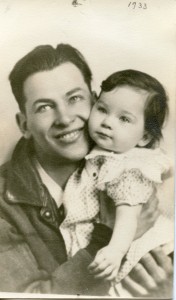An Early Casualty of the War: Arthur Witt
New Yorker Arthur Witt was among the many Lincoln volunteers to be killed at Jarama, in February 1937. Although he was only 29, he’d lived a full life. The back story of a Lincoln Volunteer.
Arthur Witt (originally Witkowsky) was born on October 4, 1907, in Brooklyn, New York in a modest Jewish family. Like many of the Lincoln volunteers, he grew up in Brooklyn and attended New Utrecht High School, graduating in 1923. That fall, he enrolled at CCNY , but after a few semesters, he transferred to the University of Missouri in 1925.
Arthur spent the summer of 1925 and a lot of 1926 wandering around the west, taking odd jobs wherever he could find them. The western travels exposed him to adventure, risk and uncertainty. He emerged a changed man. Perhaps most significantly, he had seen and experienced firsthand how most Americans had to earn their daily bread with their hands and backs with precious little to show for it.
After his travels, Arthur reenrolled at CCNY and graduated with a BS in Social Science. When the 1929 Crash hit, and the working people of America couldn’t even keep their poor-paying non-unionized jobs, Arthur moved to Cleveland’s black ghetto where he joined the staff of The Friendly Inn Settlement House and later The East End Neighborhood Settlement. These settlement houses were centers of community organization and agitation for feeding the hungry, stopping the eviction of those who couldn’t afford rent, and providing equal job opportunities for African Americans.
While attending a regional conference of community activists in Chicago in 1929, Arthur met Ruth Cizon, a social worker from Milwaukee. They were married on March 17, 1930 and eventually settled in Chicago, where their daughter, Syria Nina Witt was born in 1933.
In Chicago, Arthur organized teams of neighbors to move the furniture of evicted families back into their apartments. He visited steel mill workers arguing the need for unionization, and led delegations from the Unemployed Councils to City Hall demanding food allowances for starving families. In 1933, while working as a social worker for the Illinois Relief Commission, Arthur attempted to organize the social workers into a union. He and four others were fired for being communist agitators.
Arthur was concerned that his daughter would grow up in a system, which in “good” times provided little more than subsistence to its workers and in “bad” times threw them on the scrap heap without a second thought. He felt that the greater the freedom to speak, to organize, to act, the greater the chances of change. Although he had worked to put Roosevelt into office, he was disappointed by his policies, particularly wage and job cuts for workers on relief funding. Arthur also read The Olive Field, which focused on Spain and the workers’ struggles that were going on there. He followed the news closely after a cabal of Army generals led a rebellion against the Second Spanish Republican in July 1936.
Arthur was among the very first Americans to form a secret network to recruit and arrange for young volunteers to bypass President Roosevelt’s policy of “neutrality” by crossing the Atlantic with the intent of supporting the Spanish Republican (Loyalist) Army. Having worked to encourage others to volunteer, Arthur (who also used the party name Tom Trent) volunteered. He sailed to France on January 28, 1937, aboard the Aquitania and then proceeded overland to Spain with other Illinois volunteers to join the Lincoln battalion in the Fifteenth International Brigade.
The battle to defend Madrid had raged for months. The newly formed Abraham Lincoln Battalion arrived in the Jarama area on February 14, 1937. Within a few days, they were thrown into futile assaults against entrenched Nationalist forces on Pingarrón Height on February 23, and again on February 27, 1937. The volunteers had little training and their equipment was no match for the forces they faced. Arthur’s first battle was on February 27. Advancing in a suicidal attack without artillery, armor, or flank support approximately 120 died, including Arthur. Another 175 were wounded.
On July 9, 1937, the Illinois Friends of the Lincoln Battalion held a memorial meeting for Arthur in Chicago.













